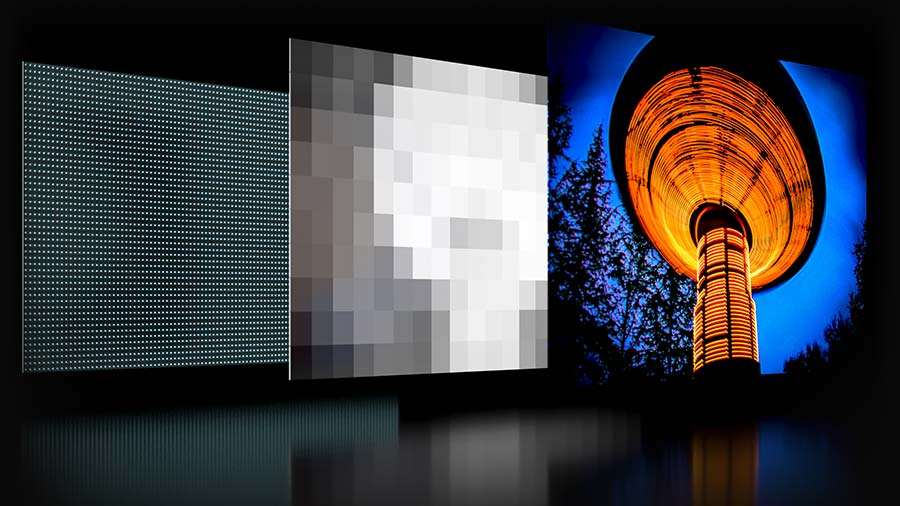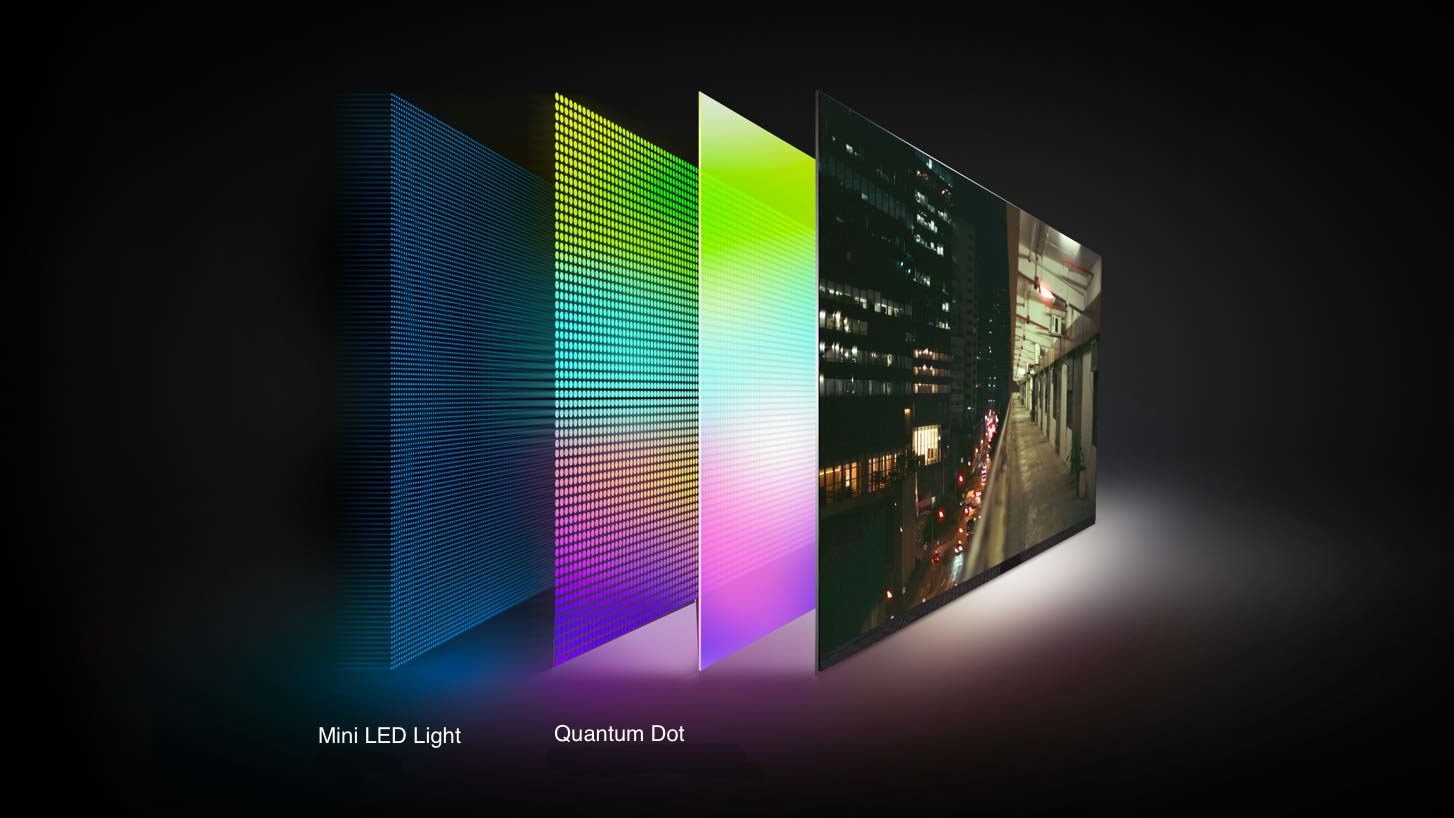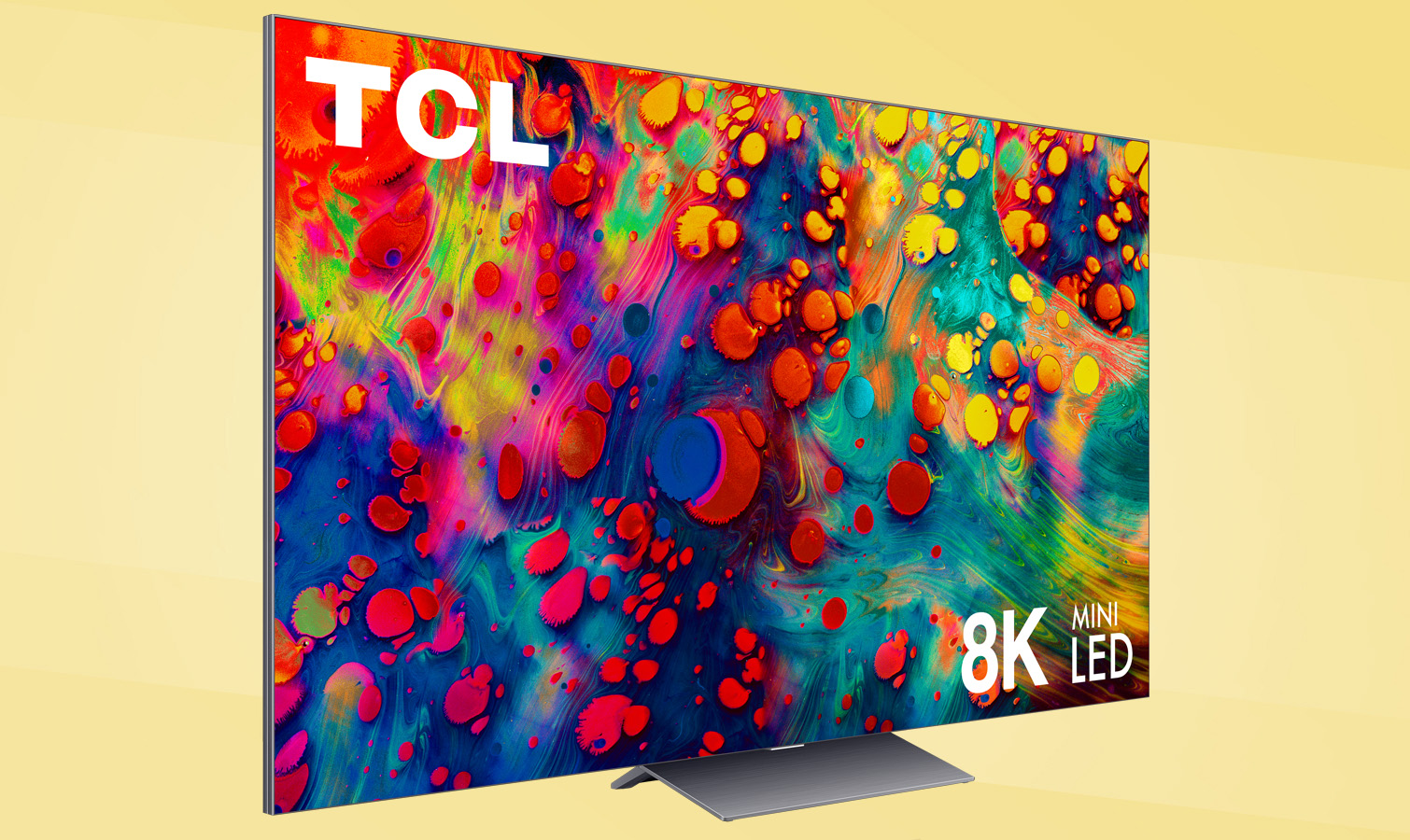Year of the mini-LED TV: Samsung, LG and TCL getting this huge upgrade
Mini-LED TVs are on the way, and that's seriously good news for shoppers

One of the biggest advancements in TV design to come to the forefront during CES 2021 is mini-LED, the extra-tiny light-emitting diodes used in the backlights of some of the latest and greatest smart TVs. 2021 is shaping up to be the year of the mini-LED TV, as Samsung and LG join TCL in using mini-LED backlight technology to make TVs better than ever.
Here's our quick overview of which TVs will feature mini-LED in 2021, why mini-LED is such an improvement over traditional LCD sets, and why this mundane sounding technology is one of the most exciting developments for TV shoppers in years.
- The best TVs right now
- Micro-LED vs mini-LED: What’s the difference?
Basics of Mini-LED
Mini-LED may seem like a relatively small change, but the technology offers real improvements to LCD-based TVs. Illumination and brightness is a key factor in making a great TV picture. Along with color and contrast, brightness makes a huge difference in how well a TV can display an image. You can get a more detailed explanation of mini-LED technology in our guide Micro-LED vs. Mini-LED: What's the difference?, but these are the broad strokes.
As TVs have evolved over the decades, the technology used to put moving pictures in our homes has changed dramatically. Though older cathode ray tube and plasma technologies and current OLED TVs are self-immissive (producing their own light), since the move to LCD panels, the majority of TVs on the market have required a separate backlight as part of the TV display. That once meant fluorescent lighting, but modern TVs use smaller, more efficient LED backlights.
Behind the LCD panel is one of several backlighting options, producing the light that makes the TV screen glow. On basic TVs this backlight might take the form of edge lighting, which rings the screen with LEDs, or full array backlighting, which uses a matrix of LED lights to provide consistent backlight across the screen, and more premium TVs feature full array with local dimming, which breaks up that lighting matrix into separate addressable zones. These zones can be brightened or dimmed independently, with brightness mapped to match the bright or shadowy portions of the screen for a more dynamic picture.
This local dimming is one of the driving factors behind the introduction of HDR formats, with LED brightness capable of reaching levels higher than past fluorescent-lit panels, with more controlled backlight. The result is a combination of lighting tech and media formatting that makes for deeper shadows, brighter highlights, and more vivid color.
Mini LED promises significant improvement over this development, allowing for a much higher number of discrete dimming zones. Measuring about one-fifth the size of a standard LED light, mini-LEDs are seriously tiny. LEDs in the mini range are only 0.008-inch (200 microns) across. The smaller LEDs illuminate a smaller portion of the screen, and can be clustered more closely together, allowing for zones that are limited to a mere handful of pixels rather than sections of the screen that might measure several inches square.
Get instant access to breaking news, the hottest reviews, great deals and helpful tips.
But that's not the only thing that mini-LED offers. The smaller physical dimensions of these individual LEDs will also allow LCD TVs to be thinner than they have ever been before.

So with mini-LED promising thinner TVs that look better and brighter than ever before, you'd expect a big jump in price, and to only see this new technology in the most expensive models, right? Well, that's where mini-LED offers its best feature – affordability.
You will pay a little more for mini-LED-equipped TVs in the coming months, but probably not a lot. TCL's impressive 6-Series Roku TVs offer mini-LED backlighting for an extremely reasonable price – under $1,000 for all but the largest 75-inch model – and the improvements to the picture quality are clear. We can only hope that this same price-conscious philosophy is applied to Samsung and LG's newest models, but we'll have to wait and see.
Manufacturers bet big on mini-LED TVs
TCL introduced its first mini-LED TV back in 2019, but the 2020 TCL 6-Series Roku TV (R635) refined the technology and brought it to an affordably-priced TV. The result was one of the best TV values we've ever seen, and Samsung and LG were clearly paying attention, as they both have new mini-LED TVs on the way this year.
And now that major manufacturers have turned their attention to mini-LED, new innovations built on top of these tiny diodes are already emerging.
Samsung plans to bring the new technology to it's premium 4K and 8K TVs this year with the Samsung Neo QLED line. Samsung's mini-LED technology includes tiny diffusers built into each mini-LED, eliminating the need for a separate diffuser panel between the backlight and the LCD.
Samsung is pairing these mini-LEDs with its QLED quantum dot-enhanced LCD panels, and calling the new models Neo QLED, and it's taking center stage on all of Samsung's premium 4K and 8K TVs. We've loved Samsung QLED TVs in the past, so we're excited to see how the new models are improved with the new tech.
LG is also jumping on the mini-LED bandwagon, adding the tiny backlights to several of it's mid-range LCD TVs, which it's calling LG QNED.
LG is taking a different tack, adding mini-LED backlight to its mid-range Nanocell TVs, and updating those panels with a hybrid technology that combines Nanocell filtering and quantum dot color boosting. That trio of enhancements just might make LG's new QNED TV line the best LCD based TV on the market, but we'll have to get it in for testing to be sure.
Finally, TCL is the only company offering mini-LED TVs that already has mini-LED sets on the market. After introducing mini-LED to its 8-Series TVs in 2019 and to the award-winning 6-Series Roku TV in 2020, TCL is introducing TCL OD-Zero, a new implementation of mini-LED that eliminates the gaps between the mini-LED backlight and the LCD panel. The result should be not only slimmer TV designs, but also an even better implementation of mini-LED.
TCL's existing mini-LED designs will continue to sell throughout the new year, with the 2020 6-Series 4K sets continuing on as the prime 4K offering in the new year. The TCL 6-Series model line will expand with new 8K models in 2021, but mini-LED will continue to be one of the defining features of the value-focused smart TVs.
Should you hold out for a mini-LED TV?
With new mini-LED TVs on the horizon but at least a couple of months away, the reasonable question for TV shoppers to ask is whether mini-LED is worth waiting for. Should you hold out for a mini-LED TV?
The answer is yes, but you don't have to. Our TCL 6-Series Roku TV (R635) review named the affordable smart TV an Editor's Choice in part because its mini-LED backlight delivered superior dimming and brightness control, and it still sits near the top of our best TVs list as the best TV value on the market.
If you want to wait for a similar mini-LED set from Samsung or LG, you will need to wait until those TVs launch this spring. We expect to get more details about models and pricing in February, and estimate that the new TVs will launch in March or April.
Going forward, unless you're on the tightest of budgets, we will definitely be recommending that shoppers opt for mini-LED when it's available. The improvement to picture quality is significant, and the increase to a TV's price is negligible, making it a must-have for TV shoppers in the coming year.
Brian Westover is currently Lead Analyst, PCs and Hardware at PCMag. Until recently, however, he was Senior Editor at Tom's Guide, where he led the site's TV coverage for several years, reviewing scores of sets and writing about everything from 8K to HDR to HDMI 2.1. He also put his computing knowledge to good use by reviewing many PCs and Mac devices, and also led our router and home networking coverage. Prior to joining Tom's Guide, he wrote for TopTenReviews and PCMag.






